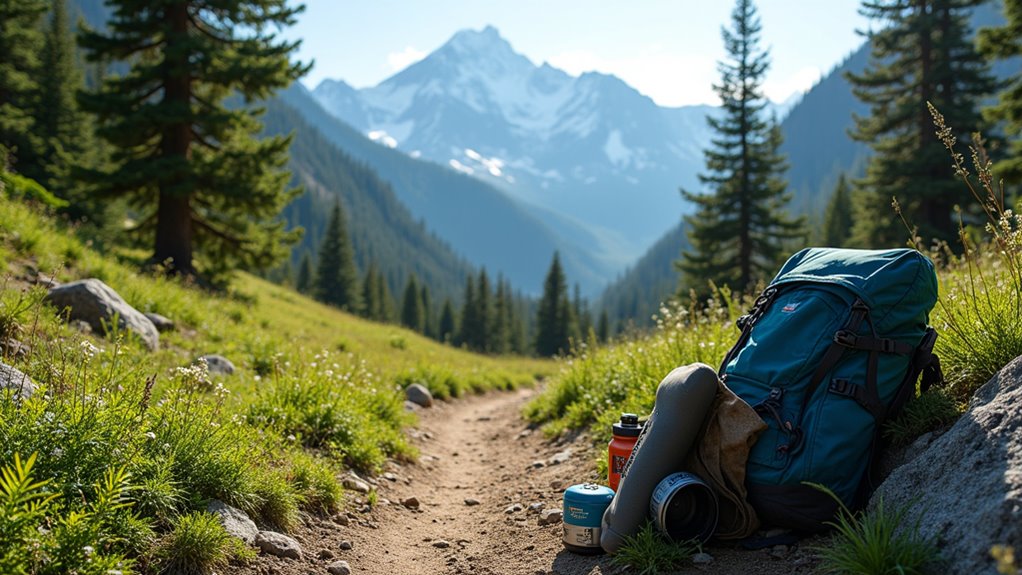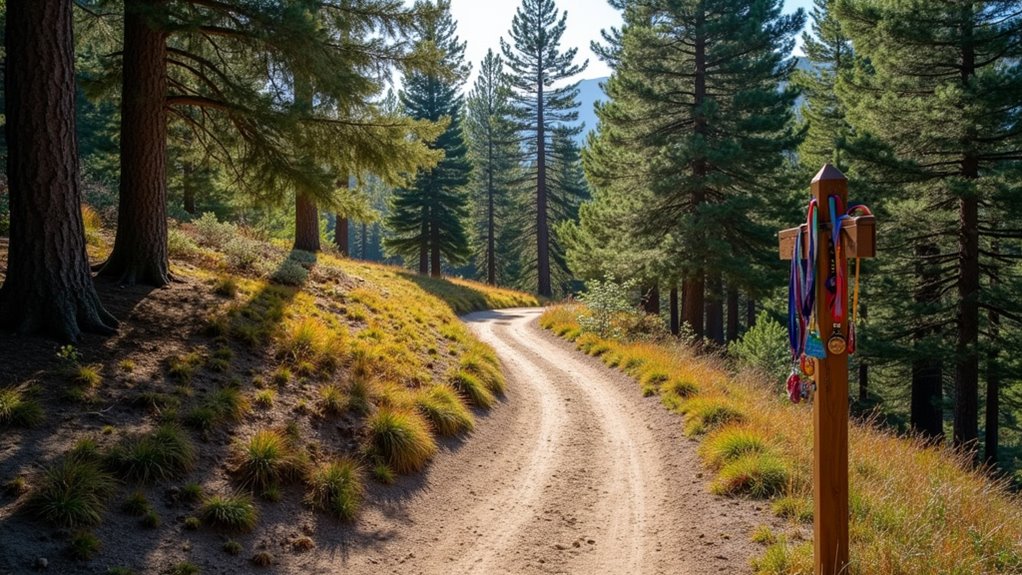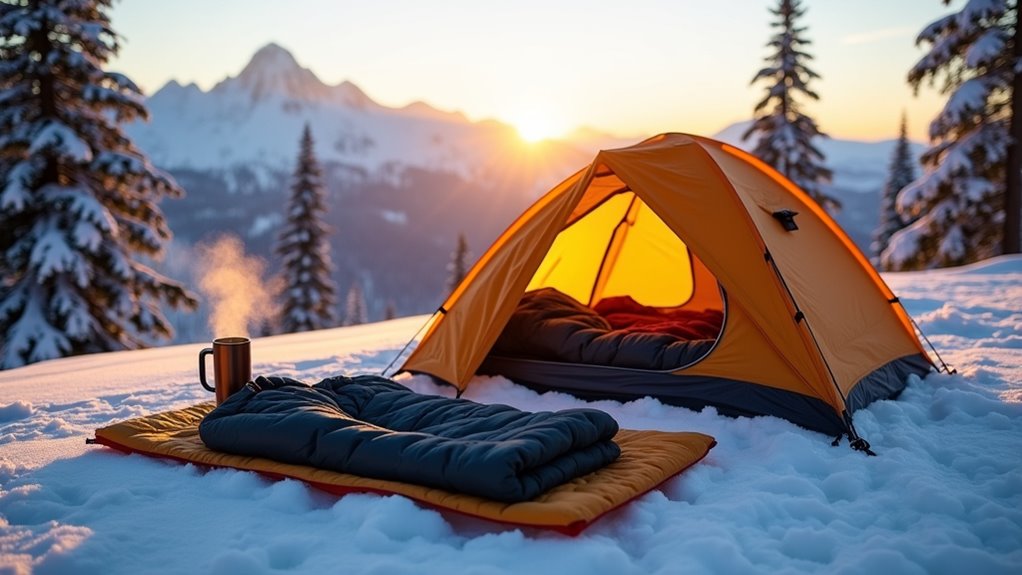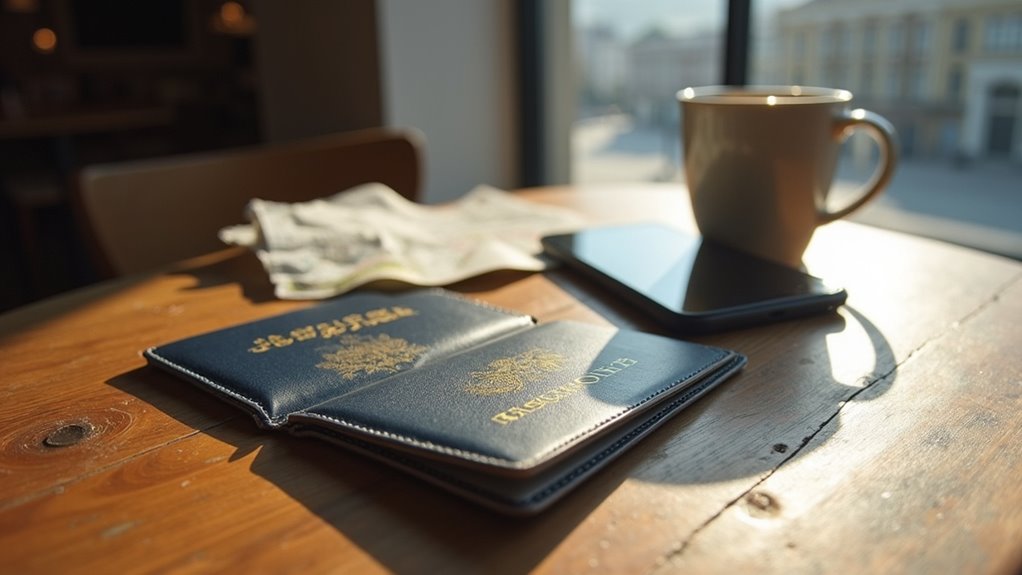To layer clothes for cold weather backpacking, start with a moisture-wicking base layer made of synthetic fabric or merino wool to keep your skin dry. Add an insulating mid layer, like fleece or wool, to trap heat near your core. Use a waterproof and windproof outer layer, such as a shell with Gore-Tex, for protection against the elements. Don’t forget insulated gloves, a hat, gaiters, and sturdy boots. Additional strategies and specific gear choices follow below.
When temperatures drop and winter conditions set in, layering your clothing becomes essential for staying warm, dry, and comfortable outdoors. The key to effective cold weather layering is understanding the distinct roles each layer plays and selecting materials and fits that maximize performance without adding unnecessary weight or bulk to your backpack.
Start with a base layer that manages moisture efficiently. Choose snug-fitting tops and bottoms made from synthetic fabrics like polyester or natural fibers such as merino wool, both of which are known for their moisture-wicking properties. Moisture management is critical, as sweating followed by rapid cooling can quickly lead to chills. For high-activity backpacking, go with lightweight base layers, while heavier options are better suited for low-movement or extreme cold. Always confirm base layers cover both your upper and lower body for thorough warmth. Baselayers serve as the foundation of a layering system, providing sweat-wicking properties and should be selected according to your planned activity type and the expected temperature conditions. For optimal effectiveness, lower body layering is just as important as upper body layering, ensuring your legs are protected from both cold and moisture.
Choose snug, moisture-wicking base layers in synthetic or merino wool to keep sweat at bay and retain warmth during cold-weather adventures.
The mid layer provides insulation by trapping heat close to your core, which is essential for maintaining overall body warmth and supporting circulation to your extremities. Fleece and wool are common mid-layer materials, offering both warmth and breathability. Remember to select proper fit for mid layers that allow enough room for movement while avoiding excess material that can bunch up uncomfortably under your outer layer. A fleece vest is a versatile option that keeps your core warm while allowing freedom of movement in your arms, which is particularly useful when hiking or climbing.
It’s important to pack mid layers that can be added or removed as your activity level or the weather changes, promoting flexibility and temperature regulation.
Your outer layer acts as your primary defense against wind and precipitation. Select jackets and pants constructed from waterproof, windproof, and breathable fabrics like Gore-Tex, which block the elements while letting perspiration escape. Durable, lightweight, and packable outerwear is essential for backpacking, confirming protection without weighing down your load. Adjustable cuffs and hemlines help seal out snow and cold air.
Complete your cold weather system with insulated gloves, warm hats, gaiters, and face masks to protect exposed skin and prevent heat loss. Insulated boots with proper traction ensure stability and warmth on icy terrain. By thoughtfully selecting slim, draping fabrics and planning outfits that integrate efficiently, you’ll achieve warmth, protection, and mobility without unnecessary bulk.









